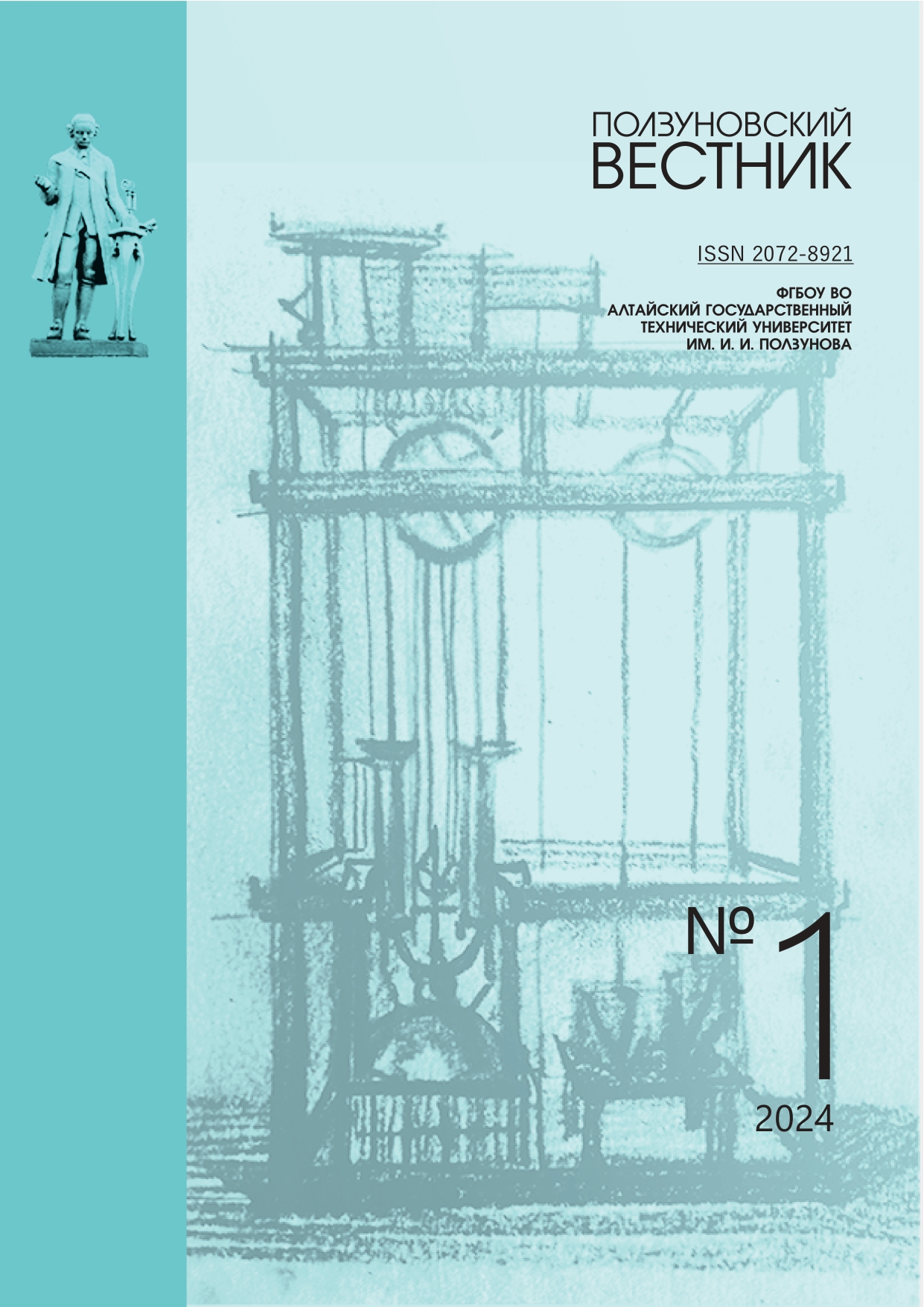PHYSICS OF WALL DIGESTION. ASSESSMENT OF THE INFLU-ENCE OF SPICES ON THE DEVELOPMENT OF ULCER DISEASE
KUYNFO
DOI:
https://doi.org/10.25712/ASTU.2072-8921.2024.01.012Abstract
Spices and herbs are used in cooking not only to give food a special taste and flavor, but they also have a beneficial effect on digestion and metabolism. However, it should be remembered that an excessive number of spices can contribute to the development of a number of diseases of the gastrointestinal tract. Thus, the main cause of the most common duodenite disease - duodenitis - inflammation of the intestinal mucous membrane is improper nutrition, including the consumption of excessive acute or acidic food. The material of the study was available analytical data on the influence of spices on the state of the gastrointestinal tract in the conditions of the development of ulcers, as well as data on the physics of eating. The influence of spices of oriental kitchens on the development of duodenal ulcers in people who are in a state of permanent full remission is considered. The speed of movement of food substances in microfibers was estimated from 1.22×10-5 cm/s to 4.40×10-5 cm/s. Based on the physical approach, numerical estimates of the occurrence of these relapses have been made when describing the process of fasting. It has been shown that even in the case of complete remission of ulcers, people who have previously suffered from it are advised to treat excessively spicy oriental dishes with caution when the first recurrence of ulcers occurs. Comprehensive studies of cavity digestion make a contribution to food processing technology, while studies of dock digestion bring some clarity to the pathogenesis and treatment of a number of gastrointestinal diseases.
References
Матвеев Ю.И., Аверьянова Е.В. Использование аналитических подходов для оценки влияния липидов на время переваривания белков и углеводов пищи // Ползуновский вестник. 2023. № 3. С. 7–12. doi: org/10.25712/ASTU.2072-8921.2023.03.001.
Чимонина И.В., Перевощикова К.Н. Биохимический анализ пряностей и их роль в питании человека // Вестник науки и творчества. 2016. Т. 2, № 2. С. 124–130.
Sachan A.K., Kumar S., Kumari K., Singh D. Medicinal uses of spices used in our traditional culture: Worldwide // Journal of Medicinal Plants Studies. 2018. Vol. 6. № 3. P. 116–122.
Xiang Q., Guo W., Tang X., Cui S., Zhang F., Liu X., Chen W. Capsaicin – The spicy ingredient of chili peppers: A review of the gastrointestinal effects and mechanisms // Trends in Food Science & Technology. 2021. Vol. 116. P. 755–765. doi.org/10.1016/j.tifs.2021.08.034.
Guldiken B., Catalkaya G., Ozkan G., Ceylan F.D., Ca-panoglu E. Toxicology. Chapter 21–Toxicological effects of com-monly used herbs and spices – London: Academic Press, 2021. P. 201–213. doi: org/10.1016/B978-0-12-819092-0.00021-2.
Church S., Gilbert P., Khokhar S. Ethnic groups and foods in Europe. Synthesis report. 2006. P. 3.
Wijaya S. Indonesian food culture mapping: a starter contribution to promote Indonesian culinary tourism // Journal of Ethnic Foods. 2019. Vol. 6. № 1. P. 1–10. doi: org/10.1186/s42779-019-0009-3.
Колосницына М.Г., Коссова Т.В., Шелунцова М.А. Факторы роста ожидаемой продолжительности жизни: кластерный анализ по странам мира // Демографическое обозрение. 2019. Т. 1, № 6. С. 124–149. doi: org/10.17323/demreview. v6i1.9114.
Mofleh I.A. Spices, herbal xenobiotics and the stomach: friends or foes? // World Journal of Gastroenterology: WJG. 2010. Vol. 22, № 16. P. 2710. doi: org/10.3748/wjg.v16.i22.2710.
Ливзан М.А., Гаус О.В., Попелло Д.В. Пищевые при-вычки и риск рака желудка // Экспериментальная и клиническая гастроэнтерология. 2023. Т. 211, № 3. С. 89–97. doi: org/10.31146/1682-8658-ecg-211-3-89-97.
Kunnumakkara A.B., Sailo B.L., Banik K., Harsha C., Pra-sad S., Gupta S.C. & Aggarwal B.B. Chronic diseases, inflammation, and spices: how are they linked? // Journal of translational medicine. 2018. Vol. 16. № 1. С. 1–25. doi: org/10.1186/s12967-018-1381-2.
Трухан Д.И., Тарасова Л.В. Клиника, диагностика и лечение хронического дуоденита // Экспериментальная и клиническая гастроэнтерология. 2012. № 11. С. 104–114.
Лифшиц Г.И., Шрайнер Е.В., Кох Н.В., Ворони-на Е.Н., Хавкин А.И. Клиническое значение изучения генетического полиморфизма факторов адгезии при Helicobacterpylori- ассоциированных заболеваниях // Экспериментальная и клиническая гастроэнтерология. 2022. Т. 1. № 197. С. 18–23. doi: org/10.31146/1682-8658-ecg-197-1-18-23.
Короткевич А.Г., Антонов Ю.А., Кузнецов В.В. Язвенные желудочно-кишечные кровотечения: анализ летальности // Медицина в Кузбассе. 2005. № 1. С. 26–30.
Клинические рекомендации по диагностике и лечению язвенной болезни. Миндрав РФ. Российская Гастроэн-терологическая Ассоциация. 2013. 39 с.
Ландау Л.Д., Лифшиц Е.М. Гидродинамика. М. : Наука, 1986. 736 с.
Леонтьев Н.Е. Основы теории фильтрации. М. : МАКС Пресс, 2017. 88 с.
Сидоркин В.Ю. Влияние гранулометрического состава помола зерна на эффективную вязкость его водных суспензий при нагреве с высокой скоростью в спиртовом произ-водстве // Пиво и напитки. 2016. № 1. С. 48–50.
Вишневская О.Н. Проницаемость стенки тощей кишки крысы при воздействии холерного токсина и липопо-лисахарида : автореф. дис. … на соиск. учен. степ. канд. биол. наук. СПб., 2018. 20 с.
Шохин И.Е., Раменская Г.В., Кулинич Ю.И., Савченко А.Ю. Изучение кишечной проницаемости в условиях invitro на монослое эпителиальных клеток Caco-2 (обзор) // Сеченов-ский вестник. 2012. Т. 3. № 9. С. 31–35.
Downloads
Published
How to Cite
Issue
Section
License
Copyright (c) 2024 Yuri I. Matveev, Elena V. Averyanova

This work is licensed under a Creative Commons Attribution 4.0 International License.
















 .
. This work is licensed under a
This work is licensed under a 
